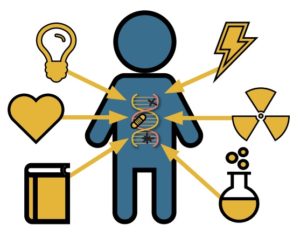 (2019, January) | Useful to Parent Centers and other caregivers of children in understanding what influences can affect childhood development.
(2019, January) | Useful to Parent Centers and other caregivers of children in understanding what influences can affect childhood development.
During development, the DNA that makes up our genes accumulates chemical marks that determine how much or little of the genes is expressed. The different experiences children have rearrange those chemical marks (called epigenomes). In fact, scientists have discovered that early experiences can determine how genes are turned on and off and even whether some are expressed at all. Thus, the old ideas that genes are “set in stone” or that they alone determine development have been disproven. Nature vs. Nurture is no longer a debate—it’s nearly always both! This explains why genetically identical twins can exhibit different behaviors, skills, health, and achievement.
To learn more about what scientists call epigenetics and how it affects child development and long-term health outcomes, check out this new infographic from the Center on the Developing Child. It succinctly and visually explains what science is finding out about epigenetics and how it relates to child development.
Find the infographic online at:
https://developingchild.harvard.edu/resources/what-is-epigenetics-and-how-does-it-relate-to-child-development/

